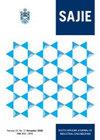TIME-DRIVEN ACTIVITY-BASED COSTING RELATED TO DIGITAL TWINNING IN ADDITIVE MANUFACTURING
IF 0.5
4区 工程技术
Q4 ENGINEERING, INDUSTRIAL
引用次数: 3
Abstract
Many businesses in the additive manufacturing industry have limited equipment capacity. This method of using time-driven activity-based costing in collaboration with digital twinning will be advantageous to optimise their use of time and their capacity. Optimising the use of time is essential to ensure efficient process flow and to waste less time and money. To optimise, we need to analyse system dynamics and model system responses, to enable us to consider various scenarios iteratively. This paper first considers activity-based costing, driven by its most precious resource, time. Standard time is defined as the base parameter by which cost is calculated. Charge-out rates of elements are based on the actual cost of equipment apportioned to activities, based on the time spent using such equipment. The process chain is broken into elements, each of which incurs full cost when started. The value chain develops accordingly, enabling us to predict the actual cost of production. Second, the use of digital twinning to model standard time is considered. Stochastic variation is evident, but standard time can be allocated to each element in the process chain, given a certain confidence level. Together, a cause — effect prediction model can be developed. The model would predict the time that a process chain, consisting of known elements, would take. However, in the event of an occurrence out of the norm, the updated expected time can be predicted. Using the same rates, the new cost can be determined immediately. We propose that the digital twin can predict production cost, based on a statistically measurable stochastic variation of element duration and the time-varying charge-out rate.增材制造中与数字结对相关的时间驱动作业成本法
增材制造业的许多企业的设备产能有限。这种将时间驱动的作业成本法与数字结对相结合的方法将有利于优化他们的时间利用和能力。优化时间使用对于确保高效流程和减少时间和金钱浪费至关重要。为了优化,我们需要分析系统动力学并对系统响应进行建模,使我们能够反复考虑各种场景。本文首先考虑作业成本法,它是由最宝贵的资源时间驱动的。标准时间被定义为计算成本的基本参数。各组成部分的收费率是根据分配给各项活动的设备的实际成本和使用这些设备的时间计算的。流程链被分解为多个元素,每个元素在启动时都会产生全部成本。价值链相应发展,使我们能够预测实际生产成本。其次,考虑使用数字孪生来对标准时间进行建模。随机变化是明显的,但标准时间可以分配给过程链中的每个元素,给定一定的置信水平。总之,可以开发出一个因果预测模型。该模型将预测由已知元素组成的过程链所需的时间。然而,在发生超出规范的情况下,可以预测更新的预期时间。使用相同的费率,可以立即确定新的成本。我们提出,数字孪生可以基于元素持续时间和时变充电率的统计可测量随机变化来预测生产成本。
本文章由计算机程序翻译,如有差异,请以英文原文为准。
求助全文
约1分钟内获得全文
求助全文
来源期刊
CiteScore
1.10
自引率
20.00%
发文量
15
审稿时长
6 weeks
期刊介绍:
The South African Journal of Industrial Engineering (SAJIE) publishes articles with the emphasis on research, development and application within the fields of Industrial Engineering and Engineering and Technology Management. In this way, it aims to contribute to the further development of these fields of study and to serve as a vehicle for the effective interchange of knowledge, ideas and experience between the research and training oriented institutions and the application oriented industry. Articles on practical applications, original research and meaningful new developments as well as state of the art surveys are encouraged.

 求助内容:
求助内容: 应助结果提醒方式:
应助结果提醒方式:


